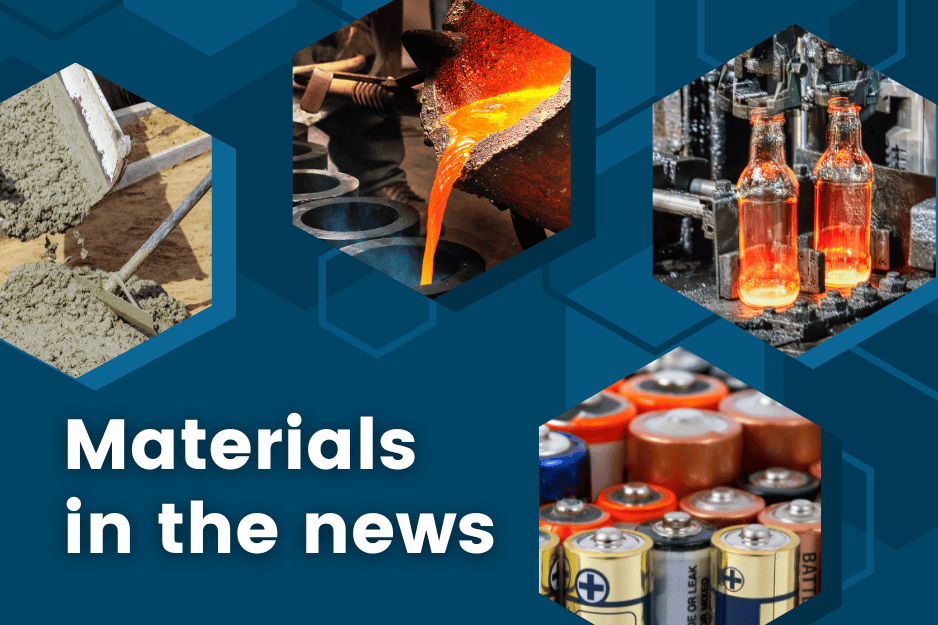
[Image above] Credit: ACerS
NANOMATERIALS
Researchers lay groundwork for designer hybrid 2D materials
An international team of researchers led by Rice University materials scientists succeeded in creating a genuine 2D hybrid by chemically integrating two fundamentally different 2D materials—graphene and silica glass—into a single, stable compound called glaphene.
New insights show universal applicability of carbyne as a sensor
Researchers led by the University of Vienna showed the universal applicability of carbyne, a linear chain of carbon atoms, as a sensor due to its sensitivity to external influences.
ENERGY
Nanoengineered thermoelectrics enable scalable, compressor-free cooling
Researchers at the Johns Hopkins Applied Physics Laboratory and refrigeration engineers from Samsung Research developed an easily manufacturable solid-state thermoelectric refrigeration technology with nanoengineered materials that is twice as efficient as devices made with commercially available bulk thermoelectric materials.
Scientists solve high-nickel cathode challenge, reducing residual lithium
Researchers from the Ulsan Advanced Energy Technology R&D Center at the Korea Institute of Energy Research successfully identified the location of residual lithium compounds, which have long been considered a chronic issue in high-nickel cathodes, and proposed a new material design strategy to significantly minimize residual lithium content.
New material conducts lithium ions faster than any previously known material
Researchers at Technical University of Munich and TUMint.Energy Research GmbH developed a new material made of lithium, antimony, and scandium that conducts lithium ions more than 30% faster than any previously known material.
Depleted uranium batteries could turn waste into power
Researchers at Japan’s Atomic Energy Agency developed a first-of-its-kind rechargeable flow battery that uses depleted uranium as its active material.
MANUFACTURING
Concrete for 3D printing of buildings uses debris from destroyed structures
Researchers from Kyiv National University of Construction and Architecture are working with international partners to create innovative waste-based concrete mixtures, specifically from destroyed structures, for use as 3D-printing construction material.
Smart software replaces expensive sensors for glass wall detection with 96% accuracy
Researchers at Daegu Gyeongbuk Institute of Science and Technology developed autonomous driving software that allows inexpensive sensors to detect transparent obstacles such as glass walls, providing an alternative to high-performance sensors. This technology can be used in existing robots, negating the need for additional equipment.
OTHER STORIES
New understanding on how to control magnetic energy
University of Kentucky researchers discovered that placing strontium iridium oxide next to certain metals or insulating layers allowed magnons, tiny waves that carry magnetic energy through materials, to move with less energy.
New milestone in multiferroic materials for magnetic memories
Researchers from the Institute of Science Tokyo, Japan, and Sumitomo Chemical Co. Ltd. demonstrated for the first time that magnetization components perpendicular to an applied electric field can be reversed in single-crystalline thin films of BiFe0.9Co0.1O3.
UK laser creates conditions to form liquid carbon for first time
A high-performance laser developed at the Science and Technology Facilities Council’s Central Laser Facility enabled scientists to create liquid carbon for the first time. Liquid carbon is a substance that can be found in the interior of planets and is expected to play an important role in future nuclear fusion technologies.
US defense research agency achieves optical power beaming record
The U.S. Defense Advanced Research Projects Agency announced record results in a test campaign of a new optical power-beaming receiver. The team recorded more than 800 watts of power delivered during a 30-second transmission from a laser 8.6 kilometers (5.3 miles) away.
New quantum visualization technique to identify materials for next-gen quantum computing
Traditionally, researchers search for topological superconductors by taking measurements using metallic probes. Now, researchers led by University College Cork in Ireland developed a technique that uses another superconductor to probe the surface of the candidate material, which allows normal surface electrons to be excluded from measurements.
Symmetry between up and down quarks is more broken than expected
Surprising results from the NA61/SHINE collaboration at CERN suggest that the so-called “isospin symmetry” between up and down quarks might be broken by more than expected due to the differences in their electric charges and masses—a discrepancy that existing theoretical models would struggle to explain.
Author
Lisa McDonald
CTT Categories
- Weekly Column: “Other materials”
Related Posts
Other materials stories that may be of interest for November 5, 2025
November 5, 2025
Other materials stories that may be of interest for October 29, 2025
October 29, 2025
Other materials stories that may be of interest for October 22, 2025
October 22, 2025